Vuelta a Espana 2018 route emerges on eve of official presentation
Nine summit finishes, new climbs, and two time trials
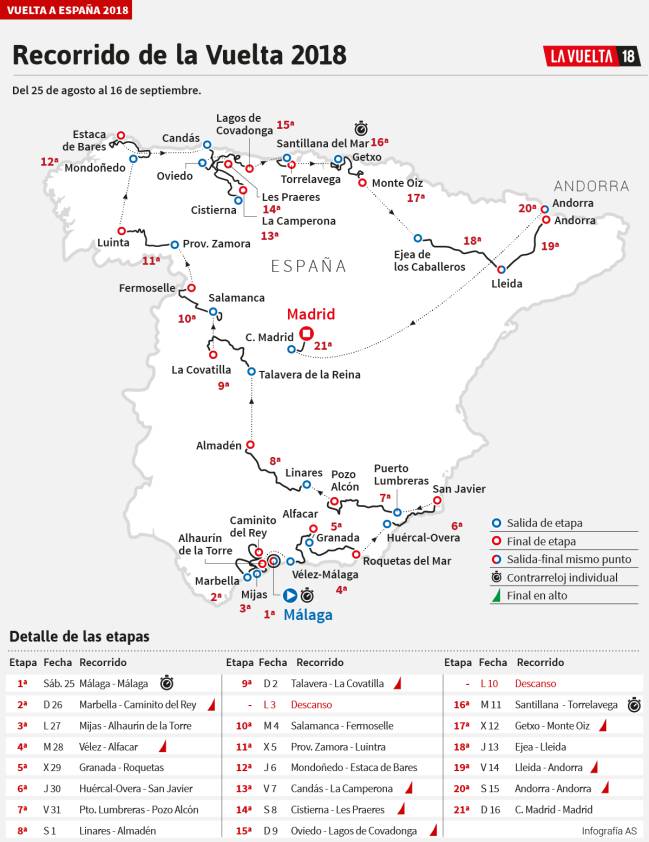
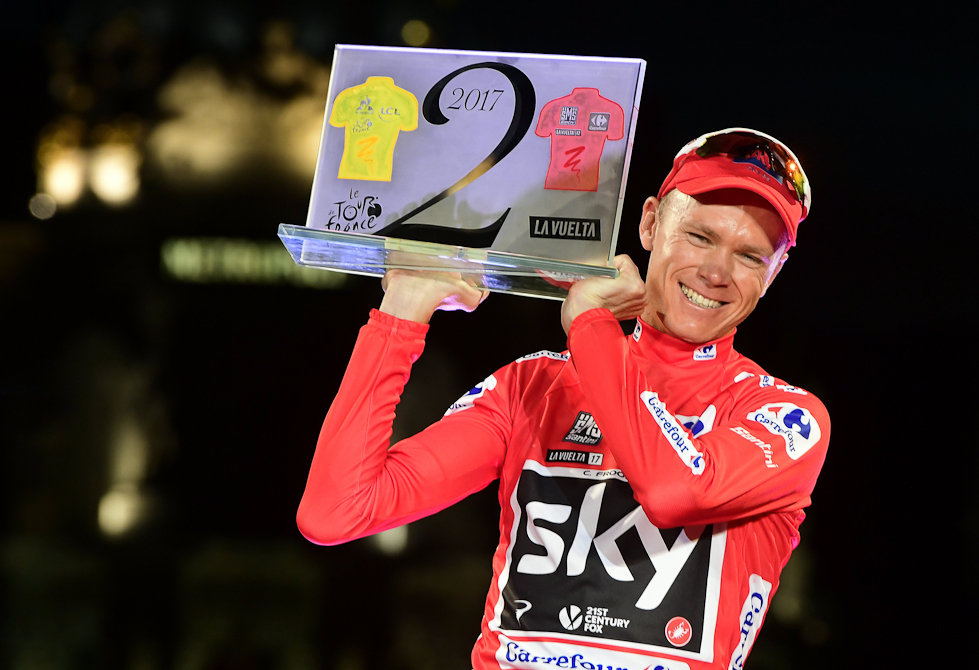
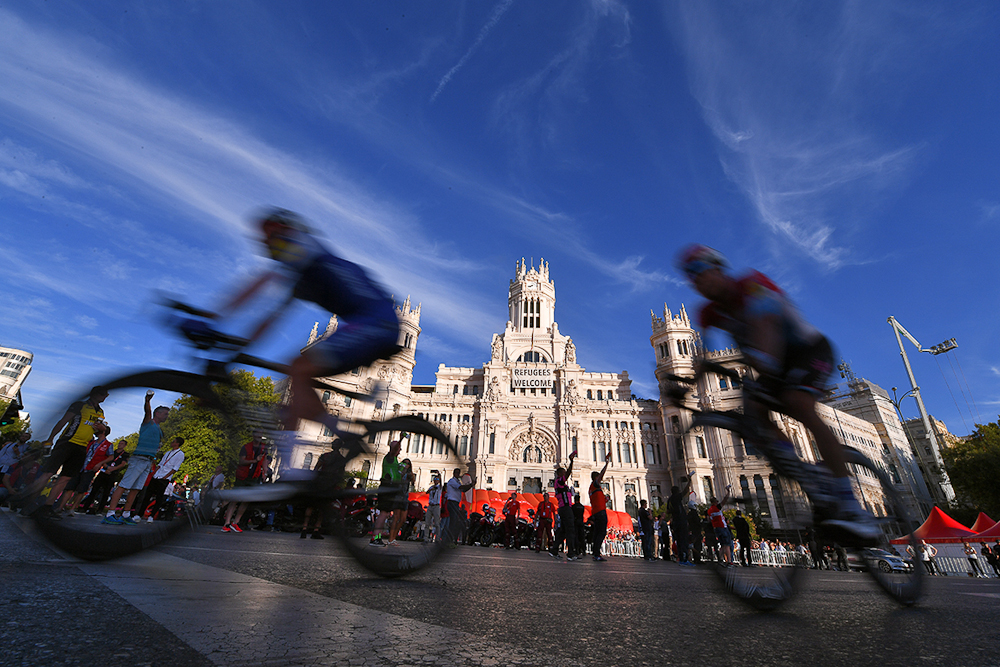
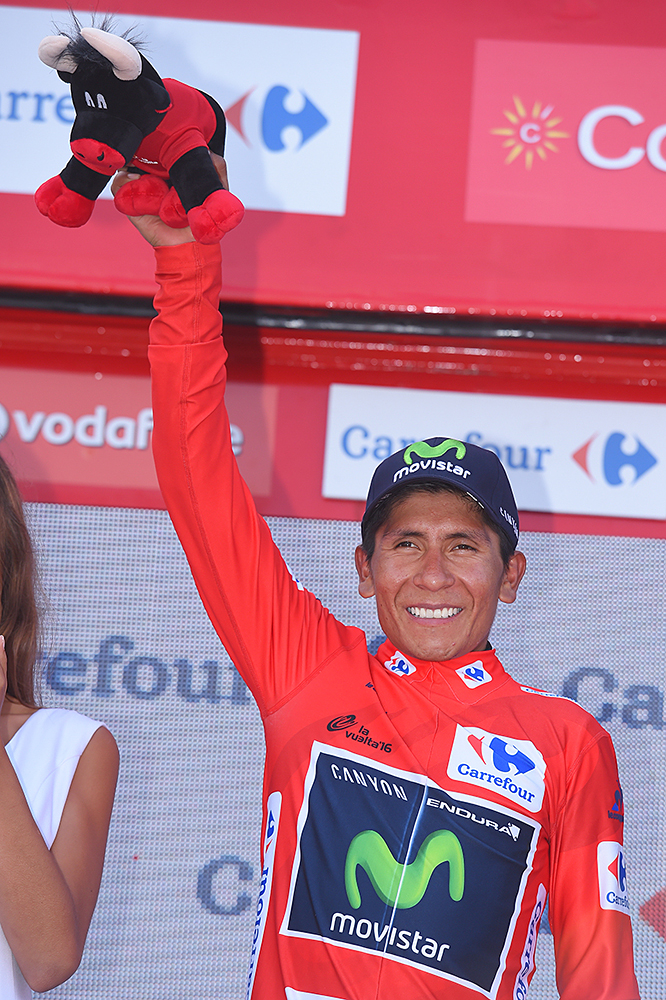
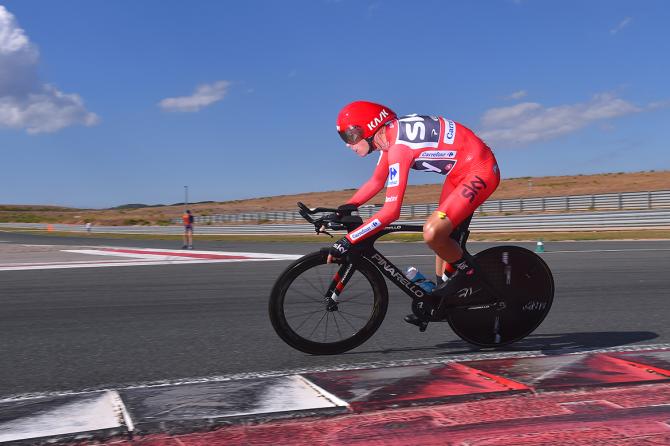
Details of the 2018 Vuelta a España have been leaked a day before the official presentation is due to take place. Spanish publication AS published a map of what they understand to be this year's route, which features nine summit finishes, two time trials, and a decisive two days in Andorra ahead of the final sprint stage into Madrid.
Vuelta a Espana confirms its brutal reputation as details of mountain finishes emerge
2018 Vuelta a Espana may visit Andorra
Vuelta a Espana to visit Lagos de Covadonga in 2018
Vuelta a Espana organisers call for 'extreme caution' after Froome salbutamol result
Vuelta a Espana's decisive final week to start with Torrelavega time trial
The race will also pay visits to the Basque Country, with the new climb of Monte Oiz, along with Asturias and Castile y Leon, with a triple-header of summit finishes at the end of the second week concluding with the Lagos de Covadonga.
It appears to be a Vuelta following the format of previous seasons, with brutal mountain stages forming the basis of the general classification battle, and a key time trial in the final week adding an element of intrigue.
AS's Vuelta route matches much of the details that have already been published in the press over the past three months. The race will start in Malaga on August 25, as previously confirmed by the organisers, with a short individual time trial rather than the team time trial that has marked the past few editions of the race.
The Vuelta will then move down the coast for a start in the seaside city of Marbella on stage 2 before heading inland for the first uphill finish of the race at the Caminito del Rey. The picturesque and challenging climb first featured in the 2015 Vuelta a España when Esteban Chaves took the victory and the leader's red jersey. It's back to the coast for the start of stage 3, as was the case in 2015. From there, it's a short hop to Alhaurín de la Torre, which could be an opportunity for the sprinters – depending on the route that the organisers chose to take to it.
The general classification riders don't have to wait long for the next summit finish as it appears on stage 4. Beginning in Velez, to the east of Malaga, the race moves into the Granada region to Alfacar, a new finish for the Vuelta. Granada will host the start of stage 5, the 39th time that the race will visit the southern city, and the riders will then make their way back to the coast at Roquetas. It remains to be seen if the organisers will take the route through the Sierra Nevada or skirt the mountain range, thus making it an easier day out for the peloton.
The race continues up the coast for stage 6 from Huércal-Overa to San Javier, before beginning the turn towards North West Spain. Stage 7 brings the riders from Puerto Lumbreras to Pozo Alcon, while stage 8 is likely to be a lumpy ride from Linares to Almaden. Following a lengthy transfer, the riders will take on the final stage of the opening week from Talavera de la Raina to the ski station at La Covatilla, the first long summit finish of this year's race. The climb has played host to the Vuelta four times, with Dan Martin winning when it last visited in 2011.
Get The Leadout Newsletter
The latest race content, interviews, features, reviews and expert buying guides, direct to your inbox!
Summit finish triple-header
After a rest day in Salamanca, the racing will kick off in the city with the start of stage 10. The route brings the riders close to the Portuguese border with a finish in Fermoselle. The race continues to skirt around Portugal, with stage 11 starting in Zamora and heading around the border to Luintra, where Simon Yates won in 2016. It is likely to be a hilly stage, as it was two years ago.
The race jumps to the north Galician coast as it moves towards the Asturian mountains with a ride from Mondoñedo to Estaca de Bares, the northernmost point of the Iberian peninsula. The race takes a turn for the brutal with a three-day trip into the mountains and three consecutive summit finishes.
The first of the summit finishes on stage 13 is La Camperona, in the Castile y Leon region, which has been visited by the Vuelta on two previous occasions. Sergey Lagutin won the last time out in 2016, with Nairo Quintana taking over the red jersey after he dropped all of his GC rivals on the climb. Ryder Hesjedal has also won on the ascent in 2014, as Alberto Contador was en route to overall victory. It's a little over eight kilometres long, with gradients breaching the 20 per cent mark on several occasions.
Summit finish number two is Les Praeres, one of the new climbs to feature in this year's race. It's another relatively short ascent but averages 13.5 per cent and once again brings the riders to their limits with gradients hitting more than 20 per cent in the final section.
Last but not least in this trio is a ride to Lagos de Covadonga to complete the second week of action. Lagos de Covadonga has been a regular feature at the Vuelta since it first appeared in 1983, with the eventual race winner coming out on top. The visit to the area celebrates the 100-year anniversary of the national park that the lakes sit in.
An Andorran finale
The riders will have one day to try and recover from the tough finish but they will need to keep the legs spinning, with a time trial opening the last week of action. The ride from Santillana to Torrelavega is expected to be a similar length to last year's offering that saw Chris Froome increase his lead in the overall classification by almost a minute.
From Torrelavega, the peloton moves into the Basque Country with stage 17 from Getxo to Monte Oiz, another new entry into the Vuelta a España's black book of difficult climbs. It is a 14-kilometre ascent with a part asphalt, part concrete surface and gradients of up to 17 per cent.
A transitional stage from Ejea to Lleida follows before two days in the mountains in Andorra. It's not yet clear which climbs the Vuelta will use, but the country has been a regular feature in the race's history. In 2015, Joaquim Rodriguez helped to design what was billed as the toughest ever Vuelta stage. It took in six climbs, one special category and four first category, and was won by Mikel Landa.
A long transfer brings the riders to the capital for the traditional sprint finish in the centre of Madrid, where the overall winner will be crowned on Sunday, September 16.